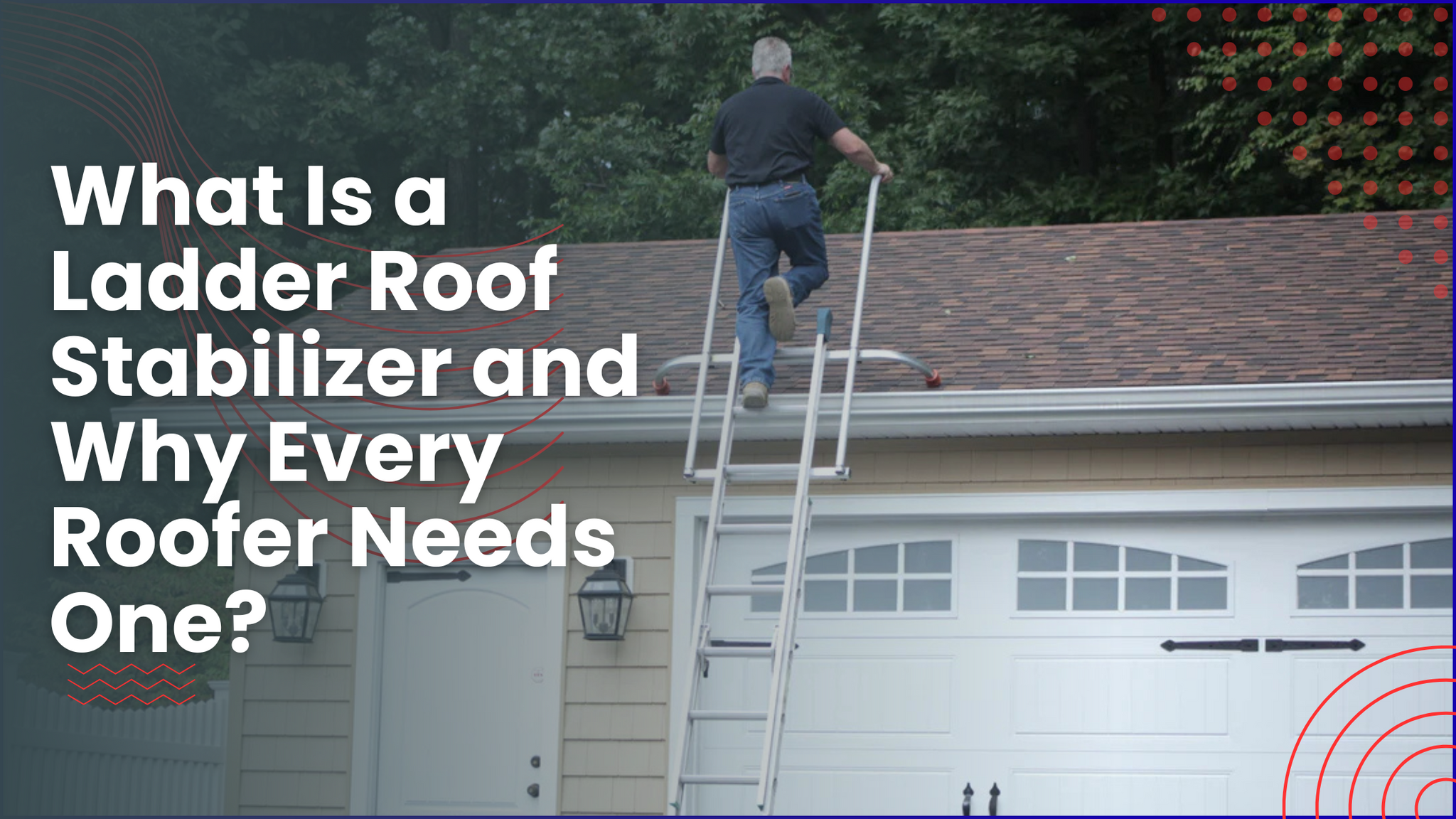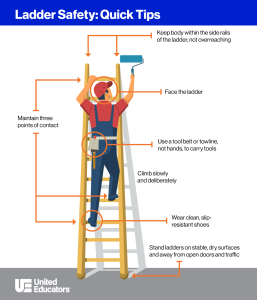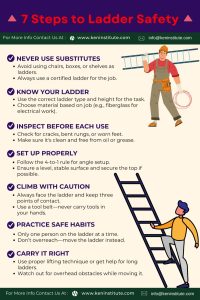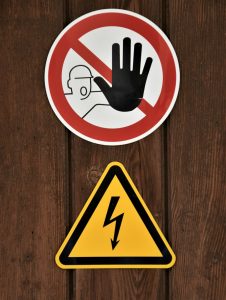Are you using a ladder often? Whether for work or home projects, safety should always come first.
The 4 Rule for Ladders is a simple guideline that can keep you safe every time you climb. Knowing this rule could prevent accidents and give you confidence when working at heights. Keep reading to discover exactly what the 4 Rule is and how you can use it to protect yourself and those around you.
Your safety matters—let’s make sure you get it right.

Credit: www.facebook.com
The 4-to-1 Ladder Rule
The 4-to-1 ladder rule is a simple guideline that helps you set up your ladder safely and at the right angle. This rule ensures the ladder is stable and less likely to slip while you’re working. Understanding this rule can prevent accidents and give you confidence every time you climb.
Calculating Ladder Angle
The 4-to-1 rule means for every 4 feet of ladder height, the base should be 1 foot away from the wall or surface it rests against. For example, if your ladder reaches 12 feet high, the bottom should be placed 3 feet from the wall.
This setup creates an angle of about 75 degrees between the ladder and the ground, which is the safest position. You can check this by measuring the distance from the wall and the height where the ladder touches.
Why The Rule Matters
This rule keeps your ladder balanced, reducing the chances of tipping backward or sliding out at the base. Without it, the ladder could lean too steeply or lay too flat, both risky positions.
Think about the last time you saw someone climb a ladder that looked wobbly. Often, it’s because the ladder wasn’t positioned correctly. Following the 4-to-1 rule helps avoid these risky situations.
Common Mistakes To Avoid
- Placing the ladder too close to the wall — it increases the risk of the ladder tipping backward.
- Setting the ladder too far from the wall — this causes the ladder to be unstable and may slide out.
- Not measuring at all — guessing the angle can lead to dangerous setups.
- Ignoring uneven ground — always ensure the ladder’s base is on a flat, stable surface.
Have you ever skipped measuring and felt unsure about your ladder’s position? Taking a moment to follow the 4-to-1 rule can save you from serious accidents.
Choosing The Right Ladder
Choosing the right ladder is crucial to staying safe and efficient while working at heights. Picking the wrong ladder can lead to accidents or make your task harder than it needs to be. Understanding the key factors will help you select a ladder that fits your specific job and environment.
Types Of Ladders
There are several types of ladders designed for different tasks. Step ladders are great for indoor jobs and offer stability when you don’t need much height. Extension ladders provide extra reach for outdoor tasks like painting or cleaning gutters.
Folding ladders are versatile and easy to transport, while platform ladders give you a standing area for longer tasks. Ask yourself: what kind of work will you be doing, and where will you use the ladder most?
Weight Capacity
Every ladder has a weight limit, which includes your body weight plus any tools or materials you carry. Choosing a ladder with too low a weight capacity is risky and can cause it to collapse unexpectedly.
Look for ladders labeled with duty ratings such as Type I (250 lbs) or Type IA (300 lbs). Always pick a ladder that can comfortably support your total load—don’t push your luck.
Material Considerations
Ladders come in materials like aluminum, fiberglass, and wood. Aluminum ladders are lightweight and resistant to rust, making them easy to move but not ideal near electrical work.
Fiberglass ladders are heavier but non-conductive, which is safer around electricity. Wood ladders offer good grip but require more maintenance and can be affected by weather.
Think about your work environment and whether you’ll be exposed to electricity, moisture, or rough surfaces when choosing material.
Setting Up Your Ladder Safely
Setting up your ladder safely is crucial for preventing accidents and ensuring your project runs smoothly. A ladder may seem simple to use, but a small mistake in setup can lead to serious injuries. Let’s dive into the key steps to make sure your ladder is stable, secure, and hazard-free before you climb.
Stable Ground Placement
Always start by checking the ground where you’ll place the ladder. The surface should be level, firm, and free of debris. Soft or uneven ground can cause your ladder to wobble or tip over.
If the ground is uneven, use a ladder leveler or place a sturdy piece of wood under one leg to balance it. Avoid placing ladders on slippery surfaces like wet grass or smooth tiles. Remember, stability starts from the ground up.
Securing The Ladder
Once the ladder is in position, ensure it’s properly secured. Extend the ladder fully and lock the spreaders or hinges if it’s a step ladder. For extension ladders, make sure the locks are engaged to prevent it from slipping.
If you’re working on a roof or higher elevation, tie off the top of the ladder to a secure anchor point. This extra step can prevent unexpected movement and give you peace of mind while climbing.
Checking For Hazards
Look around your work area for potential hazards. Overhead wires, loose tools, or unstable objects nearby can create dangerous situations. Keep a safe distance from power lines—at least 10 feet for most ladders.
Inspect the ladder itself for damage before use. Cracks, bent rungs, or loose screws can compromise its safety. A quick check can save you from a risky climb.

Credit: laddersafetyrails.com
Climbing And Using Ladders Safely
Using a ladder might seem straightforward, but a slight mistake can lead to serious injuries. Whether you’re cleaning gutters, painting walls, or fixing a light fixture, following safety guidelines can save you from accidents. Let’s dive into some practical tips to ensure you climb and use ladders confidently and safely.
Proper Climbing Techniques
Always face the ladder when climbing up or down. This gives you better control and balance. Place your hands firmly on the rungs instead of the side rails to reduce the risk of slipping.
Keep your movements slow and deliberate. Rushing while climbing can lead to missteps. Before you start, ensure the ladder is stable and positioned at the correct angle—roughly 75 degrees to the ground.
Maintaining Three Points Of Contact
To stay secure, maintain three points of contact: either two hands and one foot or two feet and one hand. This minimizes your chances of losing balance. Avoid carrying heavy tools in your hands while climbing; instead, use a tool belt or hoist them up after you’re in position.
Think about it: if one hand or foot slips, the other three points of contact will help keep you stable. It’s a simple rule, but it can make a world of difference in preventing falls.
Avoiding Overreaching
Overreaching is one of the most common causes of ladder accidents. If you find yourself stretching too far to the left or right, stop immediately. Climb down and reposition the ladder closer to your work area.
Keep your body centered between the side rails of the ladder. A good rule of thumb is to keep your belt buckle within the width of the ladder—if it goes beyond, you’re overreaching. It’s better to take a few extra steps than risk a dangerous fall.
Inspecting And Maintaining Ladders
Inspecting and maintaining your ladder is a key part of the 4 Rule for Ladders. A ladder that looks fine on the surface might hide problems that could cause serious accidents. Regular checks and proper care help keep you safe every time you climb.
Routine Checks
Before you start using your ladder, take a moment to inspect it thoroughly. Look over all the rungs and side rails for any signs of wear or looseness. Make sure the ladder’s feet are intact and not worn down, as this affects stability.
Ask yourself: does the ladder feel solid and secure? If it wobbles or has any unusual movement, don’t use it until it’s fixed. Simple checks like these can prevent slips and falls.
Identifying Damage
Damage on a ladder might be subtle but dangerous. Look for cracks, bends, or corrosion, especially around joints and hinges. Even small cracks can grow bigger under weight, risking collapse.
Check for missing or broken parts like rivets or bolts. If you spot any damage, tag the ladder as unsafe and remove it from use. Remember, ignoring damage can lead to serious injuries.
Safe Storage Tips
Where and how you store your ladder affects its lifespan and safety. Keep it in a dry place to avoid rust and rot. Avoid leaning it against walls in a way that bends or warps the frame.
Hang ladders horizontally on strong hooks or store them flat on a rack. This prevents unnecessary stress on the structure. Ask yourself if your storage method protects your ladder as much as it should.

Credit: www.linkedin.com
Frequently Asked Questions
What Does The 4-to-1 Ladder Rule Mean?
The 4-to-1 ladder rule means placing a ladder 1 foot away for every 4 feet of height.
Why Is The 4-to-1 Ladder Rule Important?
It ensures ladder stability and safety, preventing falls or tipping during use.
How Do I Measure Ladder Placement Using The 4 Rule?
Measure ladder height and divide by 4 to determine the proper distance from the wall.
Does The 4-to-1 Rule Apply To All Ladders?
Yes, it applies to extension ladders and similar types used for climbing heights.
Conclusion
The 4 Rule for Ladders helps keep you safe while working. Place the ladder at the right angle to avoid falls. Always check the ladder’s condition before use. Following this simple rule can prevent many accidents. Stay alert and use ladders carefully every time.
Safety should always come first when climbing. Remember, a safe ladder job means a worry-free day.








